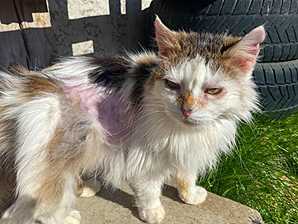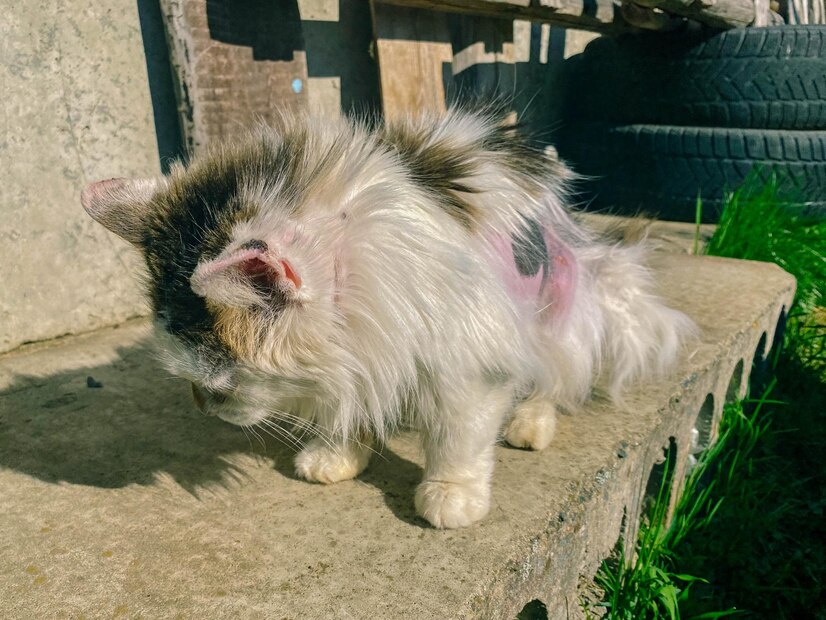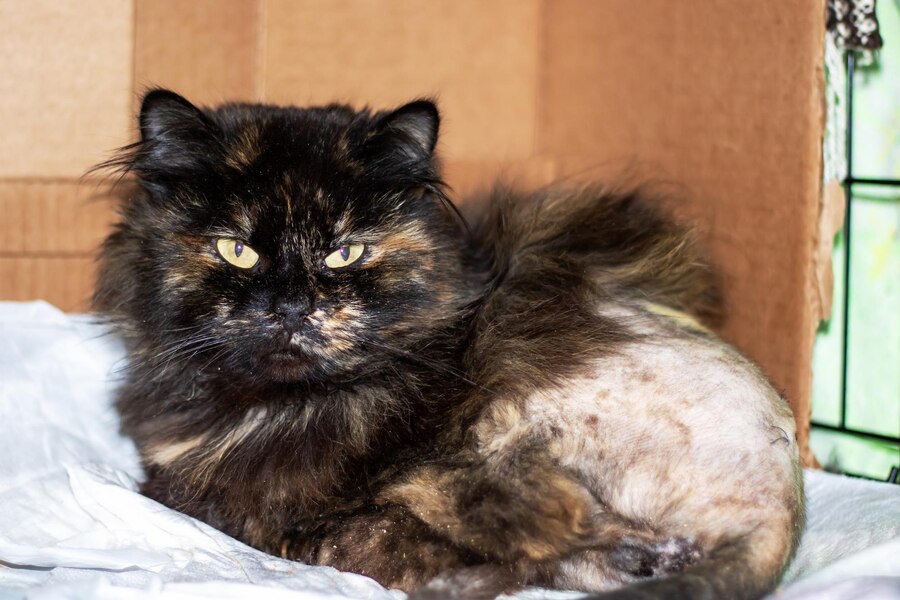Alopecia in Cats

(Picture courtesy of Freepik.com)
What purr-cisely is this condition called alopecia?
Alopecia is the partial or total lack of hair in areas where a cat’s hair is normally present.
Hair loss can be either congenital or acquired. Congenital hair loss is caused by the failure of hair follicles to develop and is obvious shortly after a kitten is born. In some cases, kittens can be born with a normal coat only to suffer local or generalized hair loss as young adults.
(Picture courtesy of Freepik.com)
Acquired hair loss, on the other hand, occurs in cats born with normal hair coats, only to lose it because of a disease that destroys the hair follicles or shafts or interferes with the hair’s growth. These diseases range from inflammation in a cat’s bladder, kidneys, gastrointestinal system or anal sacs, hyperthyroidism, recent metabolic stress, such as pregnancy, nursing or fever to cancers, including cutaneous lymphoma, thymoma, pancreatic carcinoma and bile duct carcinoma. While acquired hair loss can be inflammatory or noninflammatory, the most common cause of alopecia is an inflammatory disorder.
Capable of damaging or destroying a cat’s hair shafts and/or follicles and causing itching or pain are bacterial, fungal or parasitic infections and allergies such as flea allergy dermatitis; deep skin infections; skin trauma such as burns or radiation; and, on rare occasions, iodine, mercury or thallium poisoning. Culprits that either slow or inhibit the growth of hair follicles include nutritional deficiencies — especially protein deficiencies — or hormonal imbalances. Significant hair loss is also quite a common occurrence in cats recovering from respiratory infections. Not to mention friction from poorly fitted halters or collars and excessive grooming, so often caused by stress.
(Picture courtesy of Freepik.com)
Congenital hair loss can either be symmetrical in nature or localized to one region on a cat’s head and body and isn’t usually accompanied by inflammation. Signs of acquired hair loss are varied and include change in a cat’s skin color, excessive shedding, inflammation, itching and redness or thickening of the skin. In some cases, secondary skin conditions may develop such as an infection or fluid discharge. Alopecia caused by hormonal disorders isn’t usually itchy at first unless a secondary skin infection is involved.
Should your kitty be suffering from alopecia, bring her to the vet who will take a detailed history and perform a thorough physical examination of her skin. But for a more precise diagnosis, your vet will, in all likelihood, order lab tests to check for bacterial, fungal or yeast infections, do a flea combing, collect skin cultures, and do skin scrapes to look for parasites. If your vet suspects a hormonal problem, blood and urine tests will be ordered. A skin biopsy may be performed, and an elimination diet trial recommended using prescription food for eight to 12 weeks to test for food allergies.
Because a successful treatment plan depends on a specific diagnosis and may take some time, your vet will either provide or prescribe medication(s) to relieve some of your kitty’s discomfort, including any itching and scratching. Once the underlying cause of her alopecia is identified and appropriate treatment pursued, her hair will probably grow back. But it’s essential that you work closely with your vet, follow instructions and schedule regular follow-up visits to achieve the best outcome paws-ible.


